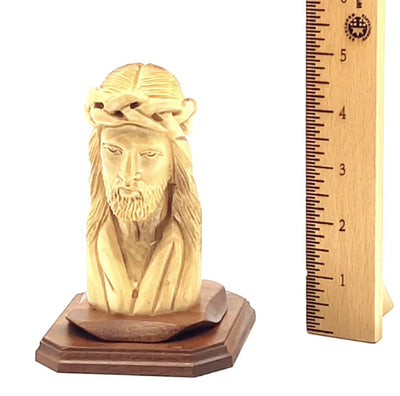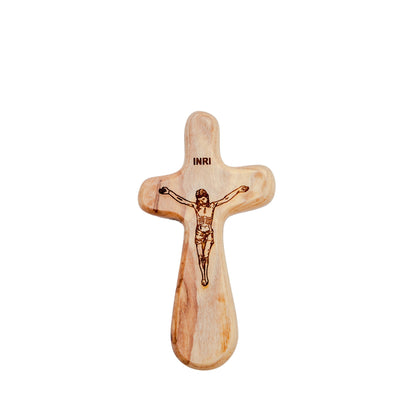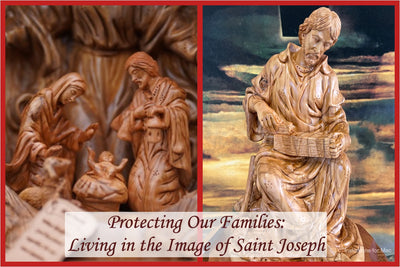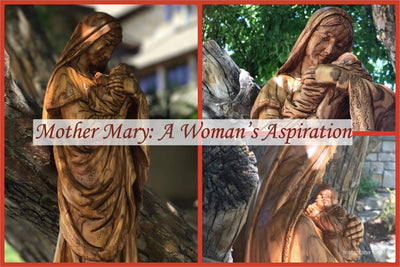“And there were shepherds living out in the fields nearby, keeping watch over their flocks at night. An angel of the Lord appeared to them, and the glory of the Lord shone around them, and they were terrified. But the angel said to them, “Do not be afraid. I bring you good news that will cause great joy for all the people. Today in the town of David a Savior has been born to you; he is the Messiah, the Lord. This will be a sign to you: You will find a baby wrapped in cloths and lying in a manger.”
One of the most sacred places in Christianity is the place where the Angel of Lord first announced the birth of Jesus to the shepherds about 2 kilometers to the east of Bethlehem, in Beit Sahour. The Shepherds' Field is a holy site that is closely intertwined with the holy night, when our Saviour Jesus Christ the Lord was born. “GLORIA IN EXCELSIS DEO!”, sang the angels while announcing the good news of the birth of the Son of God.
What's the meaning of "Gloria in Excelsis Deo"?
If you can swear you have heard this phrase before but can't remember where, you must have heard it in the very popular Christmas carol "Angels We Have Heard on High". "Gloria in Excelsis Deo" is a Christian hymn known as the Greater Doxology and the Angelic Hymn and is often abbreviated to "Gloria in Excelsis" or simply "Gloria". The name means "Glory to God in the highest" in Latin. The hymn begins with the words that the angels sang at that "silent night".
Luke 2:14 “Glory to God in the highest heaven, and on earth peace among those whom he favors!”
What do we know about the Shepherds?
The second chapter of the Gospel of Luke provides us with the reference of Shepherds in the Nativity story. As with the Magi, only one account has been passed down to us.
Shepherding has been a way of life in this part of the Judaean Hills for millennia, as sheep and goats are able to digest the rough vegetation, and water collects in both natural pools and man-made cisterns. The specific names of the shepherds who were present in the Gospel of Luke’s account of the story of the Nativity have not come down to us, but it is assumed that their numbers were at least a balance to the three Magi also present. While the names of the specific angels are also a mystery, it is sometimes implied in contemporary accounts that the Angel Gabriel, the messenger to the Virgin Mary that she would bear the Savior of the world, may have been included in this heavenly host.
In Christian tradition, the Shepherds provide a humble and identifiable balance to the grandeur and mysterious presence of the Magi at the Nativity. They are simple folk who must tend to their livestock for sustenance, and yet are called to bear witness to the most remarkable moment in human existence since the departure of Adam and Eve from the Garden of Eve.

This hand-carved olive wood statue made in Bethlehem shows Christ "The Shepherd" with his endless love to his children "sheep".
Where is the Shepherds' Field?
The traditional place of Shepherd’s Field has been held to be the low-lying plain of modern-day city of Beit Sahour, a short distance east from the Church of the Nativity, and today the largest Christian community in the Holy Land. Located near the fields of Boaz, the soil is rich, benefiting from the run-off of water collected from the hilly terrain of the Judaean Hills during the stormy winter months.
Today, there are two locations in the town of Beit Sahour which are identified as the Shepherd’s Field. Both have archaeological evidence of Churches being built at the start of the great first age of pilgrimage during the Byzantine Era of Palestine (Early 4th to early 7th Century AD), and are within walking distance of one another. The two offer pilgrims a chance to contemplate what being present at the visitation of the Angels to the Shepherds may have been like on that momentous evening.
1) Roman Catholic Shepherds' Field
You can find there three underground caves and the archaeological ruins of an olive press, stables, and a Byzantine monastery, which was destroyed in 614AD by the Persians.


2) The Greek Orthodox Shepherds' Field
It is known in Arabic as Kanisat Al Ra'wat and is under the Greek Orthodox Jerusalem Patriarchate. The ruins at the site feature a grotto that has been used as a church since the 4th century. Above it can be found remains of a Byzantine chapel, which was destroyed in 614AD. The chapel and a monastery were rebuilt in the 7th century and survived until the 10th. Their remains have been preserved in 1989. In the same year, a new large church was built and the lower church has been restored.
 The Upper Church of the Greek Orthodox Shepherds' Field
The Upper Church of the Greek Orthodox Shepherds' Field
Join one of our 2018/2019 upcoming pilgrimages to visit the Shepherds' Field and almost every single holy site in the Holy Land to be one of the most blessed people who get to walk on the footsteps of Jesus Christ.
Bethlehem Handicrafts: The Holy Land experience you’ll never forget.
Read Now: The Holy Family’s Journey to Bethlehem







 This olive wood hand-carved nativity set is made in the city of Bethlehem. It shows the glowing star that the Shepherds followed to find the Divine child.
This olive wood hand-carved nativity set is made in the city of Bethlehem. It shows the glowing star that the Shepherds followed to find the Divine child.

1 comment
Is this from Shepard’s fField my family toured The Holy Land and this was given to me. Stone from shepherds field shaped as a cross